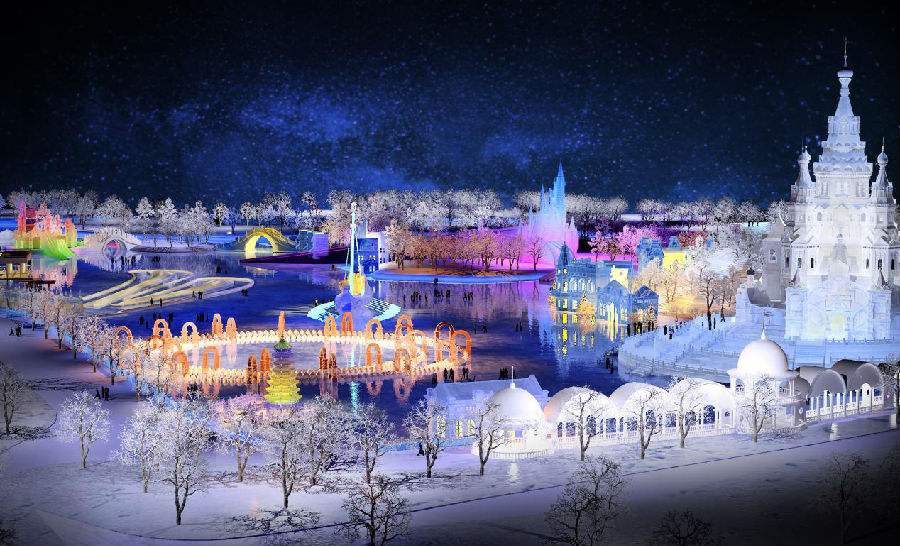Chinese Name: 太阳岛 Pronunciation: tài yáng dǎo
Building Time: 1964
Admission Ticket Fare: Free
Opening Hours: 8:00-17:00
Suggested Visiting Hours: 2-3 Hours
Park Area: 88 square kilometers
Best Visiting Season: Summer and winter
Address: No.1 Taiyang Avenue, Harbin, Heilongjiang Province

The Sun Island is located on the north bank of Songhua River in Harbin, Heilongjiang Province. It is an island in the Songhua River, located between the old and new urban areas of Harbin. The Sun Island covers an area of 88 square kilometers, with the planned area of 38 square kilometers and the outer protection area of 50 square kilometers.
Sun Island is a multifunctional scenic area with ice and snow culture, folk culture and other resources. It is also an ecological area along the Songhua River in China. The Sun Island is a national 5A-level scenic spot.
The Sun Island Scenic Area was awarded as National Scenic Area, the first batch of national "AAAAA-level tourist attractions", National Water Conservancy Scenic Area, and so on.

With the construction of the Middle East Railway in the 20th century, many foreign nationals came to Harbin one after another and built villas here.
In 1964, the Sun Island Scenic Area was formally established.
In 1989, it was named the Heilongjiang Provincial Scenic Spot.
From 2003 to 2005, with the aim of "reshape the tourism brand of Sun Island and build an ecological city", the Harbin Municipal Party Committee and Municipal Government invested 550 million yuan to carry out a large-scale comprehensive renovation and transformation of Sun Island. The Sun Island was changed from the past resort and sanatorium to a national scenic spot.
In 2006, the Sun Island Scenic Area hosted the Changchun Asian Winter Games Torch Relay and Sino-Russian Youth Friendship Gathering.
In May 2007, the Sun Island Scenic Area was assessed by the China National Tourism Administration as a national AAAAA-level tourist attraction.
Squirrel Island
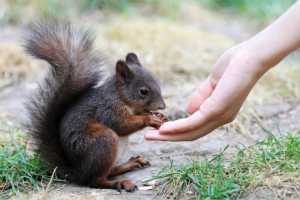
The Squirrel Island, as the name implies, is home to nearly 2,000 artificially domesticated squirrels. In June 2006, the Sun Island Park introduced more than 600 squirrels from the mountainous area of Liaoning Province, which further increased the number of squirrels on the island. The Squirrel Island is the largest squirrel viewing, domesticating, and science knowledge popularizing base in Heilongjiang Province.
Squirrel Island covers an area of about 24,000 square meters. It is located in the north of the dike in the Sun Island Scenic Area. It is surrounded by water and the terrain is undulating. It consists of three small islands, connecting by imitation wooden trestle bridges. Around the small islands, the glass fence is set up to prevent squirrels from escaping. There are lush trees on the island, and some wooden squirrel nests are built on the trees for squirrels inhabiting. In addition, there are many cave-style garden sketches and large-scale wood and stone landscapes on the island.
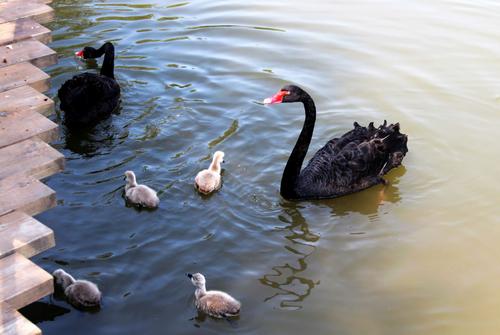
Swan Lake
Swan Lake is located in the north of Sun Island Park. It covers an area of 1.2 hectares. In Swan Lake, there are black swans, whooper swans, cygnets, mandarin ducks, and other swimming birds.
Sun Island Flower Garden
The Sun Island Flower Garden is located on the north side of Gate 1, covering an area of 7 hectares. It is the largest flower base in the three northeastern provinces (Heilongjiang province, Jilin province and Liaoning province). In the flower garden, there are more than 200,000 rare and precious northern flowers with 12 shades, 39 varieties, such as peony and Chinese herbaceous peony.
Ice and Snow Art Museum
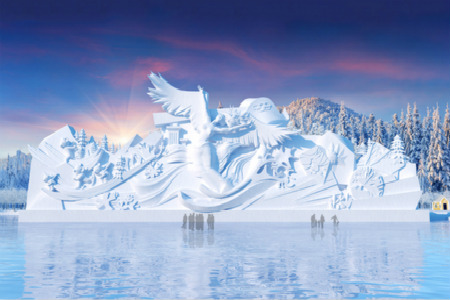
The Ice and Snow Art Museum was built in 2000. It was jointly invested by Dalian Refrigeration Co.,Ltd and the Sun Island Scenic Area Management Office.
The Art Museum covers an area of 5,000 square meters with a net height of 7 meters. It contains more than 100 ice scenes. It is the largest indoor ice and snow art venues in the world. The ice scene in the museum is made of natural ice from the Songhua River and artificial snow. The significance of the art museum is to make the snow and ice landscape in winter available indoors in spring, summer and autumn. The museum is mainly divided into five scenic spots as below.
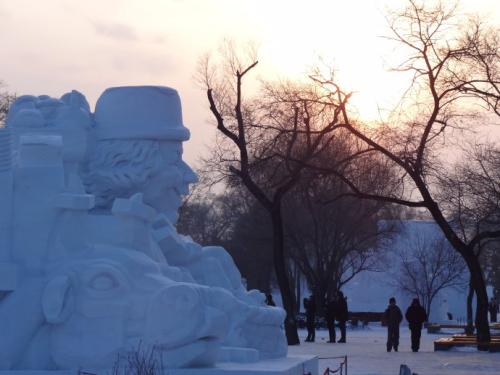
The scenic spot reflects the long-standing gardening art in China. In this scenic spot, plants are combined with ice and snow gardening, creating a beautiful view of "artificial but visually natural." The ice works in this scenic spot are mainly modeled after Chinese historical sites, such as the Temple of Heaven, Great Wall, Huabiao (a large stone column), Long Corridor and the pavilion for appreciating plum blossom.
With the help of ancient Chinese art such as Dunhuang frescoes, Longmen Grottoes, Datong carvings, Dazu rock carvings, the ice carvings, and snow landscape, it shows the culture of the Northern Wei Dynasty, the development of human civilization.
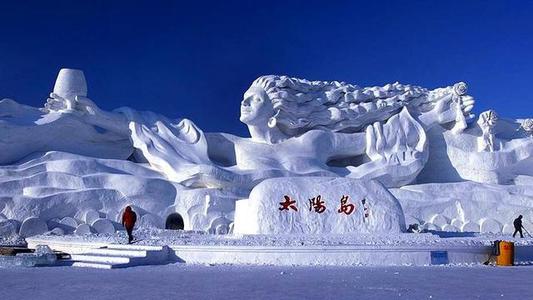
This scenic spot mainly reflects the local culture and customs of Heilongjiang Province through ice and snow works. The ice works describe the unique forest and snowfields in Heilongjiang Province, the customs of ethnic minorities, the precious wild animals, and the plant resources in Heilongjiang Province.
This scenic spot shows some world-famous historical sites, cultural heritage, and famous foreign landscapes through ice and snow works, such as the Royal Palace of Thailand, Indian statues, Roman Art Square.
At the beginning of 2007, the Ice and Snow Art Museum underwent more than two months of redecoration, artistic lighting arrangement. Some ice and snow landscapes were carved again, and 33 ice and snow sculptures were added.
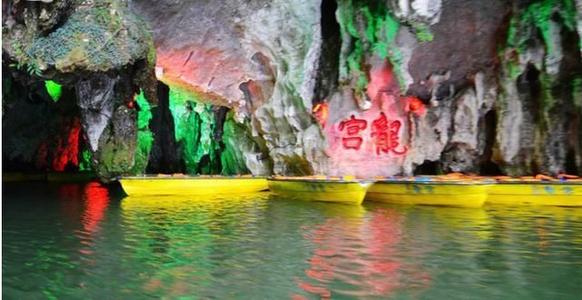
This scenic spot is characterized by participatory and interactive activities. There are popular rides like the Great Hippo Slide, the Colorful Ice Labyrinth, and the Great Dragon Palace.
Sun Island Art Museum
The Sun Island Art Museum is located in the Sun Island Scenic Area. It is a national 5A-level tourist attraction. It takes calligraphy, painting, and seal cutting as the main forms of expression to show the essence of Chinese culture. It provides an art communication platform for famous artists in Heilongjiang and national celebrities and famous artists. This is also the first professional art museum independently established by Sun Island Scenic Area.
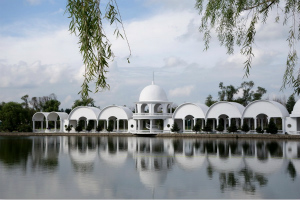
The Sun Island Art Museum covers an area of 1,000 square meters. The museum has three exhibition areas: the first one is the exhibition of the painting and calligraphy works taking Sun Island as the theme; the second is the exhibition of original representative works of painting and calligraphy by famous artists; the third one is the exhibition of Huang Ming’s representative painting and calligraphy works. Huang Ming is a famous painter, calligrapher and seal cutting expert in China.
The collection in the museum has more than 1,000 pieces of Chinese paintings and calligraphy works. And there are two independent art creation rooms in the museum. The main function of the museum is art exhibitions, aesthetic education, holding cultural events, and so on. It is a multifunctional art exhibition hall integrating professional exhibitions, art collections, and cultural exchanges.
The completion of the Sun Island Art Museum has further enriched the cultural connotation of Sun Island. With its unique Chinese traditional painting and calligraphy, it has become a shining star in the Sun Island cultural community.
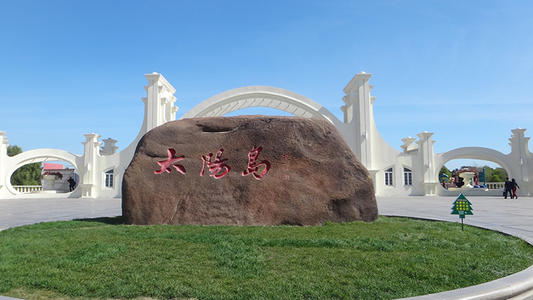
The Gate of Sun Island is the main entrance to the west of Sun Island. It is 68 meters long, with both ends facing the Sun Stone, and the main gate is 12.03 meters high. The gate is composed of one large, four small, and five elliptical arched doors. The design theme of the gate is “Window of the Sun”. And the architectural style is the Art Nouveau one.
The arched gate in the middle is on the same central axis as the Sun Stone. The huge rock in front of the door is located in the center of the sun pattern, and at the foot is a simulated Harbin city block map.
The sunstone in front of the main entrance of the scenic spot is 7.5 meters long, 2 meters thick, 4.3 meters high, and weighs 150 tons. It is a natural strange stone. According to a legend, the Sun Stone was the elixir left by Lord Laozi (the founder of Taoism) when he made alchemy.
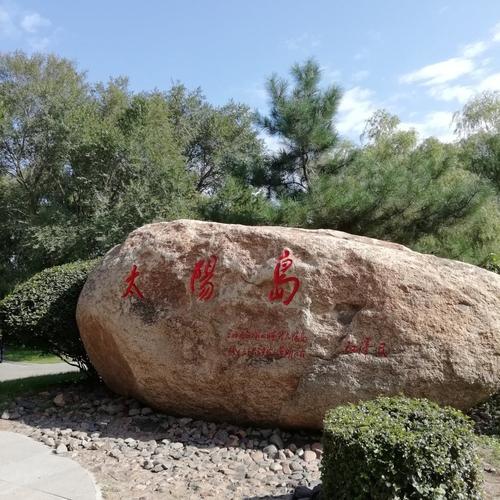
Another legend said when Taizu Jin (the first emperor of the Jin Dynasty) was a teenager, he sharpened his sword on the stone to inspire himself. When he was an adult, he and his generals drew ashes on the stone to discuss military matters. At that time, during the Jin Dynasty (1115-1234), senior generals would hold a military meeting before the army battle with each other. They used dust as paper and tree branches as pens to outline the route of the march, leaving no trace of the dust after the meeting. According to the legend, that stone is the Sun Stone now.
General Li Zhaolin of the Northeast Anti-Japanese Allied Forces once led people to rest around the Sun Stone. Of course, these are all folklore, without official confirmation. However, this also shows that the sunstone is regarded as a strange stone by the local people.
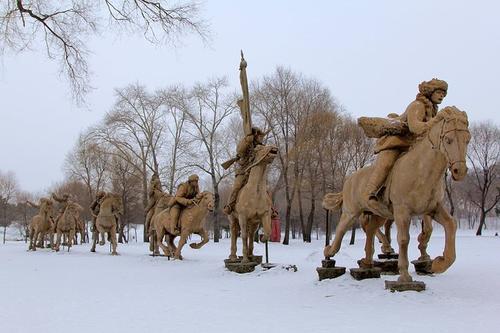
The Northeast Anti-Japanese War Memorial Park is located near the east of Sun Island. It was built to commemorate the Northeast Anti-Japanese Allied Forces. And it has become the largest anti-Japanese war education and memorial base in Northeast China. The memorial park covers an area of 36,000 square meters. It is different from the previous solemn memorial models. It uses anti-Japanese soldiers’ sculptures, camps, undulating terrain, and combines trees with running water, and boulders to reproduce the anti-Japanese battlefield.
In the memorial park, a large tree with a peculiar shape is called the "Anti-Japanese Allied Forces Tree". The tree is more than 80 years old. Although the trunk of this tree has withered, new subtrees have grown from its trunk. The sub-branches are luxuriant and lush, which symbolizes that although the heroes of the Anti-Japanese Alliance have passed away, the fire of the revolution continues for generations, and the spirit of resisting foreign aggression will be immortal.
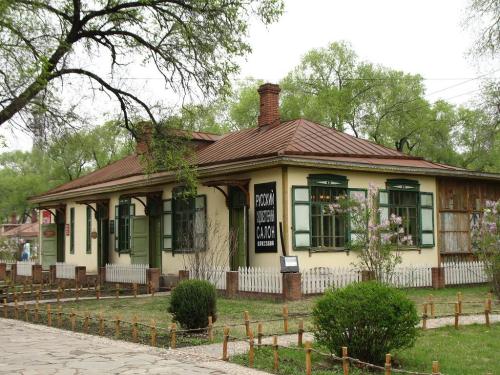
Russian-style Town
The Russian-style Town is located in the Sun Island Scenic Area, closing to the scenic line along the river. The whole town is composed of 27 villas and houses with Russian style. The small town is hidden among flowers and green trees. The villas scattered in order, each with its own style, forming a unique natural and architectural style.

The Sun Island International Snow Sculpture Art Fair is the birthplace and leader of the national snow sculpture art. It is an important part of the Harbin Ice and Snow Festival and the biggest highlight of Harbin Ice and Snow Tourism. Due to the long exhibition period (60-70 days) of the Snow Expo every year, the snow sculptures here are of high quality, new styles, and large scale. They are all award-winning snow sculptures. So it is known as the largest snow carnival in the world. The snow sculptures of Sun Island in winter include magnificent style and exquisite style. The snow sculptures were made by students in competitions with their own styles.
Chinese: 请带我去太阳岛。English: Please take me to Sun Island.
If you go to Sun Island from Taiping International Airport, it takes about 45minutes. (About 80 yuan)
If you go to Sun Island from the Harbin Railway Station, it takes about 30 minutes. (About 23 yuan)
